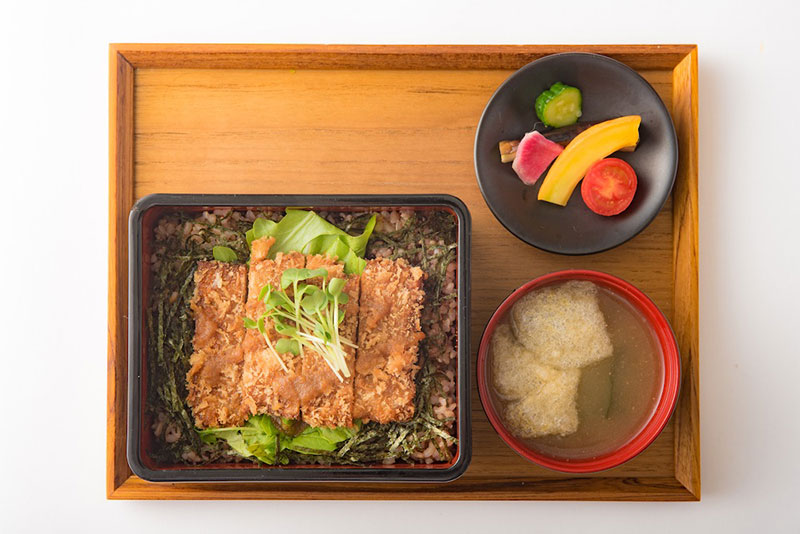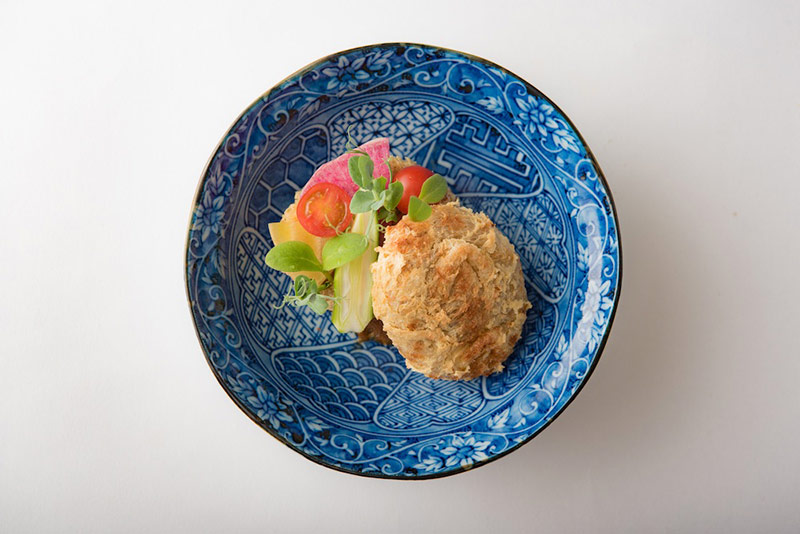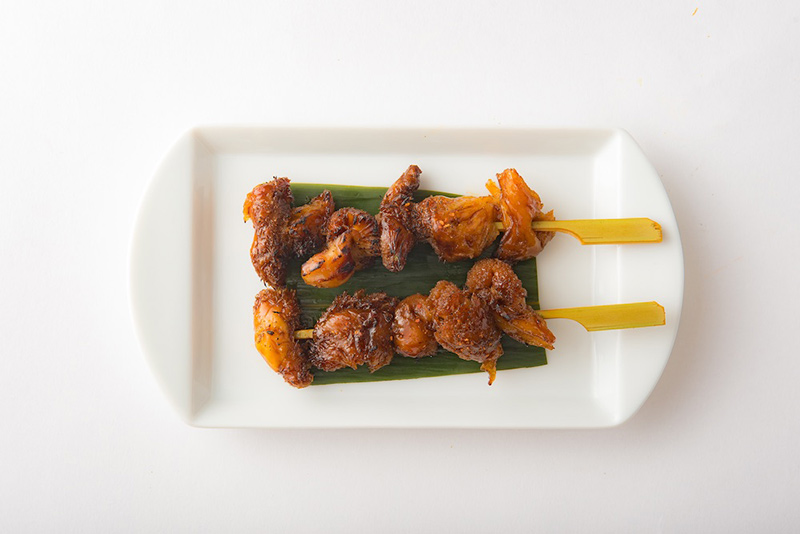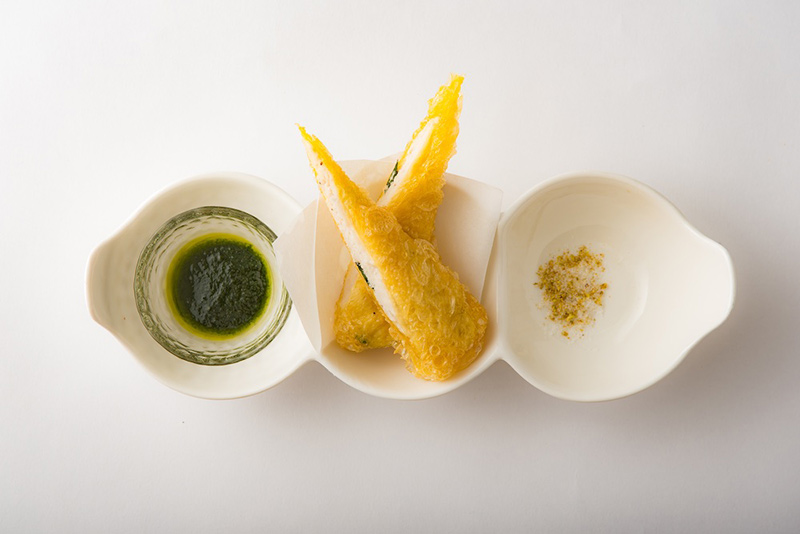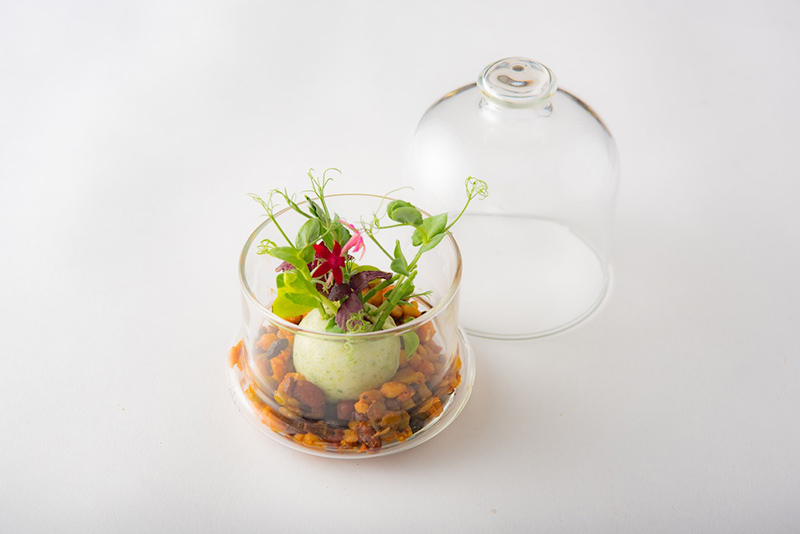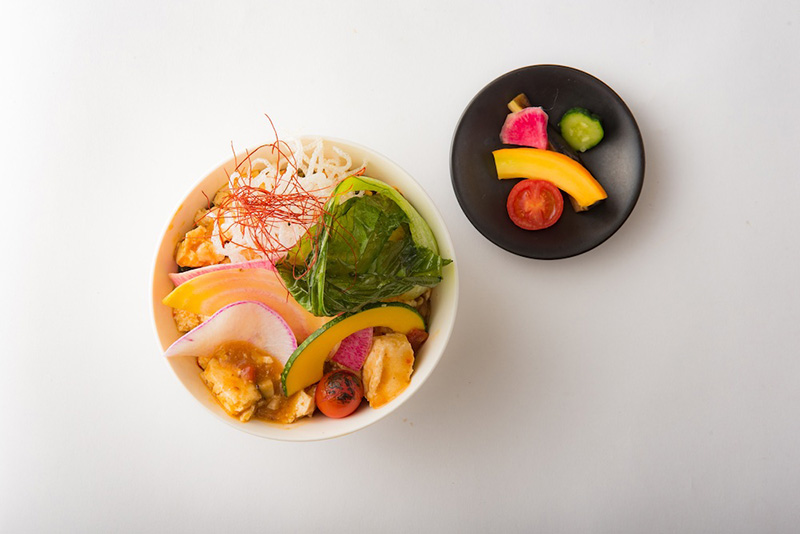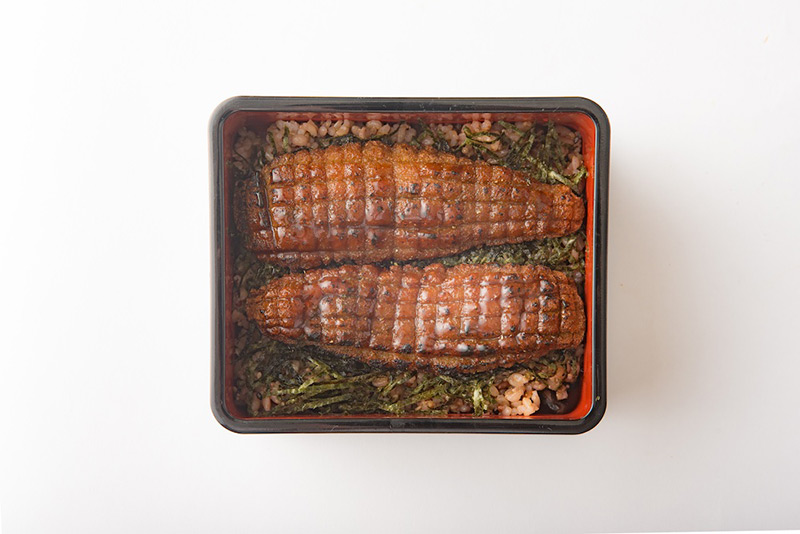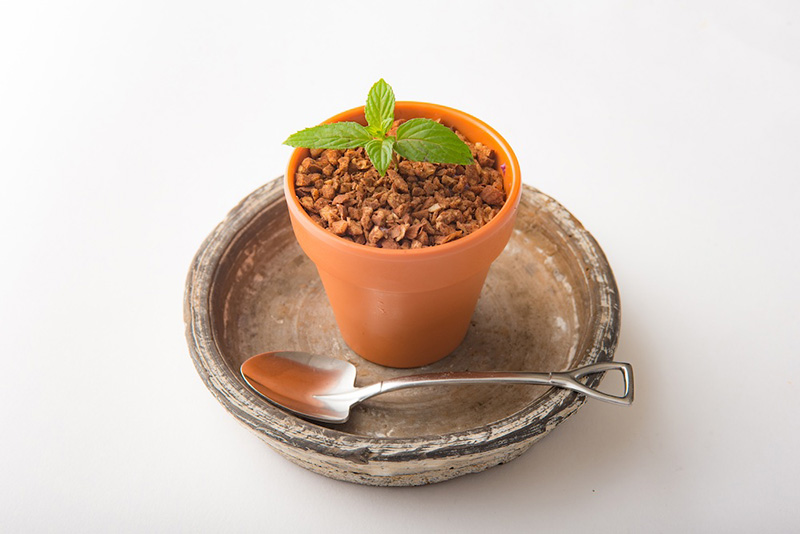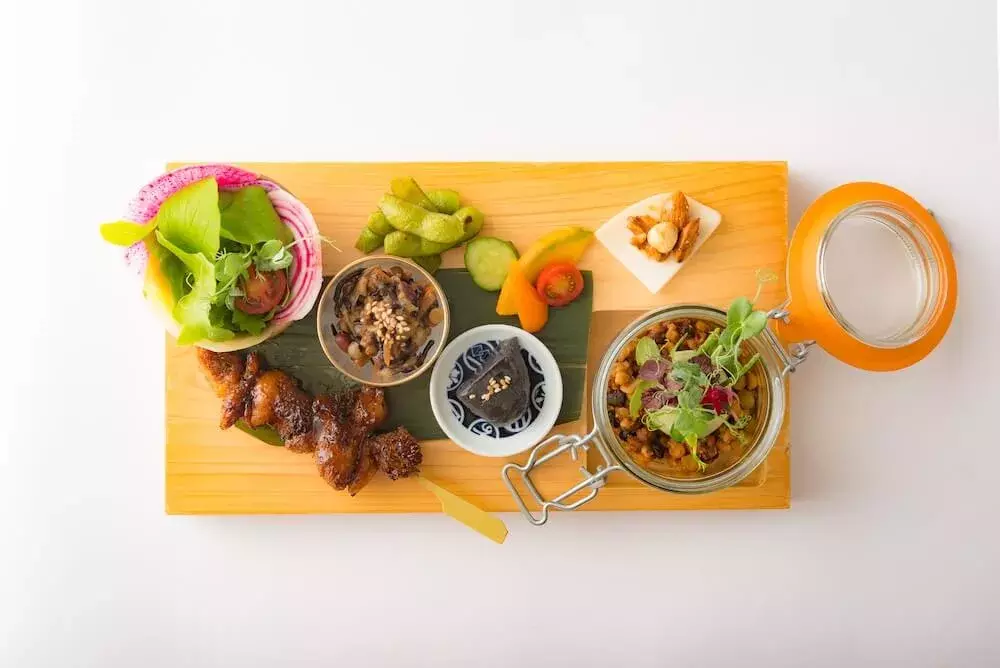
From fresh-caught sashimi to smoky yakitori skewers, hearty wagyu beef to delicate egg custard, some of Japan’s most famous flavors involve animal products. But the culture also has a rich tradition of vegan and vegetarian food dating back centuries, as well as a new generation of chefs and foodies, proving that “Japanese vegan cuisine” doesn’t have to be a contradiction in terms.
In fact, for a long period of Japan’s history, vegetarianism and/or pescatarianism was the rule, not the exception. Prior to the 6th century AD, the typical Japanese diet was omnivorous and based on what was available to hunt, fish, gather and grow – with an emphasis on vegetables and grains, and resource-intensive fish or meat consumed primarily on special occasions. But in the year 675 AD, following the introduction of Buddhism to Japan, Emperor Tenmu declared an official prohibition of eating meat (including beef, horse, dog, chicken, and monkey) with an exemption for fish and wild animals. This ban was renewed in various forms by successive emperors until the 19th century, so that for over 1000 years, Japan was officially a “vegetarian” (or, technically, pescatarian) nation.
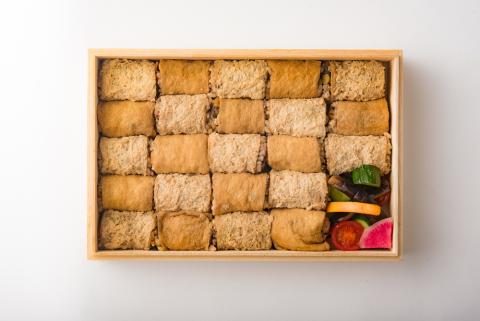
When Dutch traders first arrived at the trading post on Dejima Island near Nagasaki prefecture in the 17th century, Japanese people viewed the meat-heavy Western diet with both shock and fascination. However, at the start of the Meiji Restoration in 1868, when Japan re-opened after centuries of seclusion, and its newly-installed regime sought to modernize and “catch up with the West,” the national attitude to meat changed. Japan’s leaders encouraged young men to eat meat, hoping to strengthen them in their push to build a powerful military. Meat was steadily incorporated into Japanese cuisine from this point onwards, its use only skyrocketing in the post-World War II period when Japan’s economic miracle allowed average working people to afford meat dishes on a regular basis.
In countries like the U.S., vegetarianism (let alone veganism) was also historically niche; only in recent decades have an awareness about health and concerns over animal rights and the ecological impact of meat contributed to the rise of “plant-forward” cooking. In Japan, even after the lifting of the “taboo” on meat-eating in the 19th century, vegetarianism was still practiced by devout Buddhists (laypeople and clergy), but in recent years, a new generation has been turning away from meat and animal products in response to global concerns about health and the environment. Of course, where some Western vegan entrepreneurs are founding synthetically engineered “clean meat” and other novel products, Japanese chefs and foodies have centuries-old meat-free culinary traditions to draw from, expand on and reinvent.
For some, the concept of Japanese vegan cuisine has been synonymous with shojin ryori, the refined vegan food served at Buddhist temples that is as much an aesthetic and philosophical experience as a gustatory one. Shojin ryori is based on seasonally-available ingredients and typically features rice and soup, and some combination of tofu and vegetables, prepared in various ways, including simmering, tempura-frying and pickling. These meals are not only free of meat but also often garlic, onion and other heavy seasonings, in alignment with Buddhist principles and also to allow the subtle natural flavors to shine (JAPAN HOUSE Los Angeles hosted a shojin ryori event in 2020). But since the meal is also meant to be eaten as part of a contemplative experience, with little noise or distraction, shojin ryori has generally not been accessible to the average Japanese urbanite on a typical busy work day.
Luckily, a new wave of chefs, restaurateurs and influencers are exploring the whole spectrum of vegetarian and vegan food – from elevated to extremely casual. One example is the restaurant SAIDO by chef Katsumi Kusumoto (coming to JAPAN HOUSE Los Angeles for a pop-up dining series in January 2023), where even classics like pork-based tonkotsu ramen and chicken yakitori skewers are recreated entirely with vegetables, showing that vegan cuisine doesn’t have to be a disavowal of “fun” food. Other chefs may focus on spotlighting the non-meat-items that are already anchors of a traditional Japanese meal – like tofu (learn more about the versatile white square here), fermented products from pickles to natto (learn more about fermentation’s superpowers here), or bamboo shoots (learn more about multi-faced bamboo here).
For Japan’s vegetarians and vegans, one enduring challenge has been that even dishes that seem free of animal products might have been prepared with some as seasoning, such as tofu made in fish-based broth or noodles sprinkled with chicken flavor powder. But in recent years, large food companies such as Nissin have added genuinely “vegan ramen” to their product lines, and some regular restaurants have an increased awareness of vegetarian or vegan diets and have added such dishes to their menus. The international vegan website Happy Cow now lists over 3000 restaurants serving vegetarian and vegan food around Japan. As the vegetarian “ecosystem” grows in Japan, more people may embrace it as a lifestyle, while others may simply enjoy adding it as an option to their eating repertoire. In 2017, the Japanese government cabinet added a vegan lunch option for Fridays, and other leaders and have been promoting the concept of “Meat Free Mondays”. Whether it’s sophisticated shojin ryori or vegan ramen, and whether it’s daily, weekly, or once in a blue moon, there are more plant-based cuisine possibilities in Japan than ever before, and it’s the ideal way to tap into both the past of washoku and a vision of its sustainable future.


